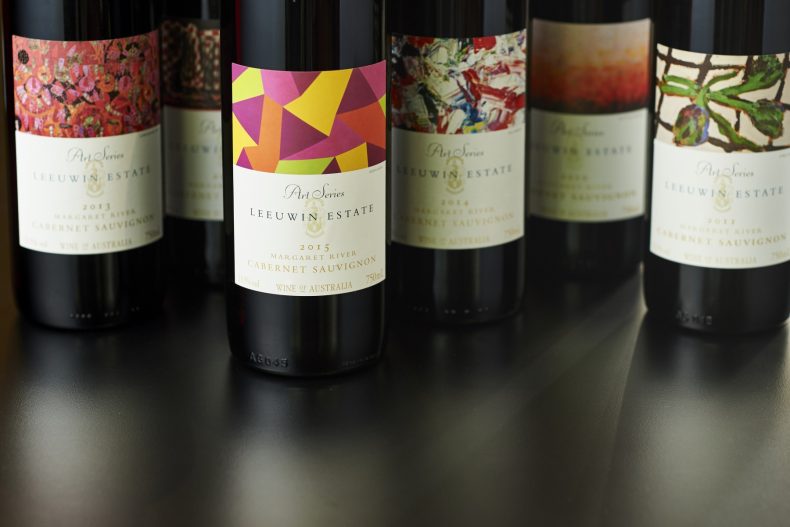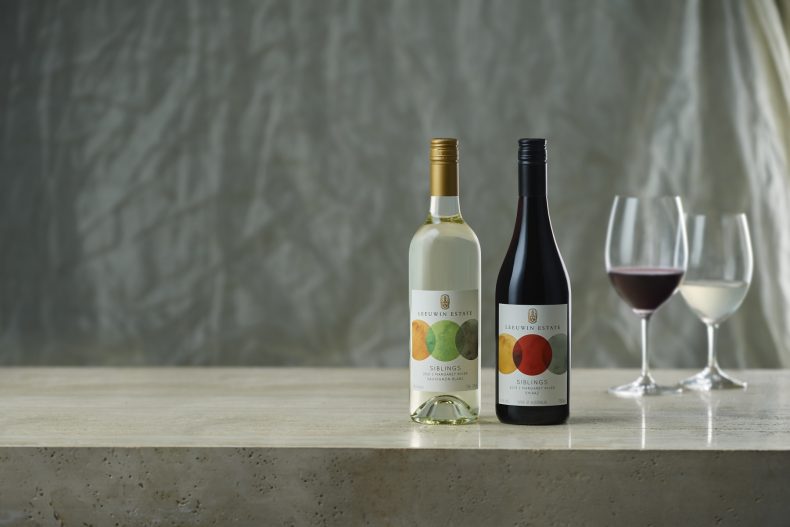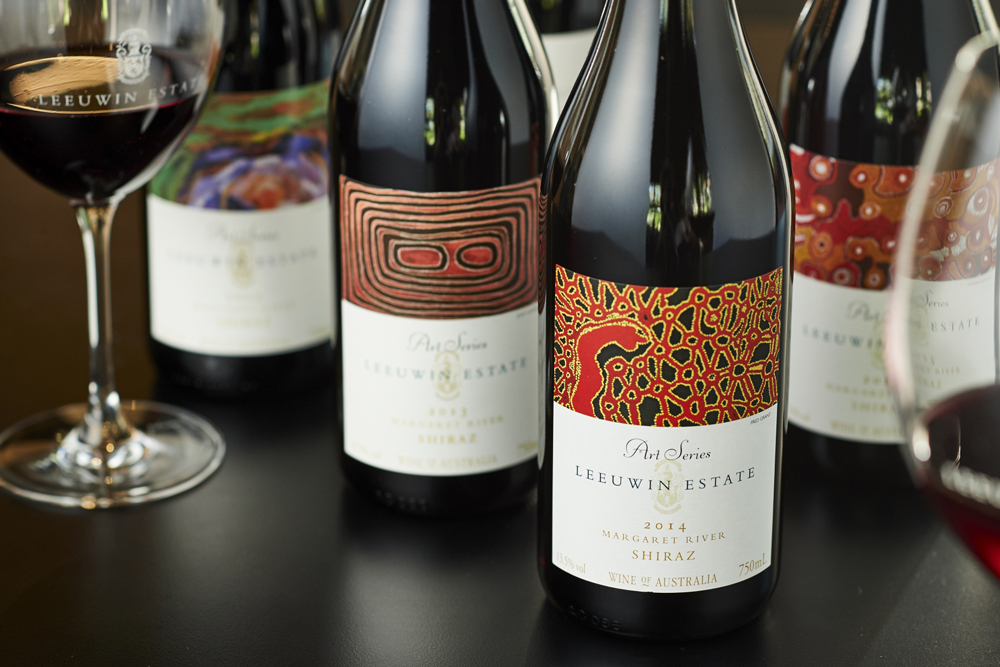The Margaret River wine region is found in a remote part of Western Australia, approximately 300 kilometres south of Perth, but its geographical isolation has accelerated its reputation for winemaking excellence. Its output is relatively new compared to that of other regions in Australia, but is consistently lauded by the international wine community. (The region produces only 2 per cent of Australian wines, but 20 per cent of its premium ones.) Notable critics and industry leaders, from the Mondavi family to Jancis Robinson, have been championing these wines since ‘Margs’ came on to the scene in the 1970s.
Of the 214 vineyards in the region, Leeuwin Estate has established the most formidable reputation. Its range of premium wines, known as the ‘Art Series’, is adorned with labels featuring works from an array of 20th-century Australian artists, from John Olsen to Arthur Boyd and Sidney Nolan to Fred Williams. The wines include Cabernet Sauvignon and Shiraz, as well as cooler varietals: Riesling, Sauvignon Blanc and the flagship Chardonnay. ‘We call it the art of fine wine,’ says co-founder Denis Horgan, ‘and a fine winery. It’s the same thing, isn’t it? Yes. Art and fine wine blend in together here.’
The estate in its current form is the result of ‘a series of fortunate accidents’, as Denis’s wife, Tricia, explained to me on a bright and humid day last December. In 1969, the couple ventured out on the peninsula to purchase a property, ‘officially’ with the intention of developing a plumbing business. ‘But actually,’ Tricia says, ‘it was mainly so Denis could come down and surf on the coast on a regular basis.’
Art Series Shiraz 2021, featuring Badjerrungu and Manganda by the Andinyin and Kitja artist Ngarra
The land remained untouched for some years and the Horgans even thought of selling, until they were informed by staff that an American was sniffing around the plots, collecting samples and surveying the layout. It turned out to be Robert Mondavi, who, having left his family business in Napa to explore new markets and sites, was lured to Margaret River. The region was in its early stages of development (the first commercial vineyards there were planted in 1967), but people were starting to notice its potential. Denis confesses that he was a ‘beer-drinking surfie’, an accountant who knew ‘nothing about wine’; ‘you couldn’t get anyone squarer than that to get into the wine industry.’
Mondavi convinced the couple to try planting, because they were sitting on a plot of land that he could foresee would ‘rank with the best in the world’. They planted the vines in 1972 and produced their first commercial wine in 1979, the Art Series Chardonnay, which was so successful that within three vintages Decanter awarded the wine its highest award in an international blind tasting.
The couple regarded their practice as a form of art, so they decided to approach Sidney Nolan to design a label for their next wine. ‘You don’t understand,’ he replied. ‘I’m a serious artist, not a graphic artist. I don’t do labels.’ Tricia and Denis took him two unlabelled bottles; he rang the next day and said, ‘For this wine, I’ll do a painting.’ The resulting work, Dolphin Rock, appears on the 1982 Art Series Cabernet Sauvignon.

A sample of Leeuwin Estate wine bottles. Courtesy Leeuwin Estate
The Horgans want to support artists through commissioning and purchasing art – a kind of ‘oenophilanthropy’ that educates drinkers about Australian art history. Tricia tells all artists whose work she collects: ‘If you are going to be on our labels, you are going to be part of our story.’
And there are myriad stories. John Olsen appeared one day in the winery restaurant, wearing his distinctive red beret. Tricia asked him to create the first artwork for the latest Art Series Riesling. He responded with four works, Frogs in Riesling, featuring anthropomorphic amphibians in playful, exaggerated poses. These drawings were ‘so irresistible’ that the Horgans could not decide which to keep, so they now alternate between all four. ‘[Olsen] loved to say, “they change every other artist every year, but they’ve never been up to changing mine, because they know mine look so good”.’

Two Leeuwin Estate wine bottles. Courtesy Leeuwin Estate
The art collection is organic: Tricia purchases works she likes, often after meeting the artists themselves. The estate’s senior wine-maker, Tim Lovett, is keenly aware of how the art complements the wines and vice versa. He collects art himself, particularly art made by First Nations people that depicts the natural beauty and spirituality of the Australian landscape. The Leeuwin Estate Shiraz, first released in 1999, was dedicated solely to First Nations artists such as the Andinyin and Kitja painter Ngarra and Alyawarre woman Minnie Pwerle, who found success late in life with her vibrant paintings of scenes from her country.
For centuries, French winemaking was considered the gold standard for newer regions to emulate, just as Australian landscape painting was for a long time ruled by the principles of European fine art. Through its approach to winemaking, Leeuwin Estate is making its mark on both the old ways and the new.
